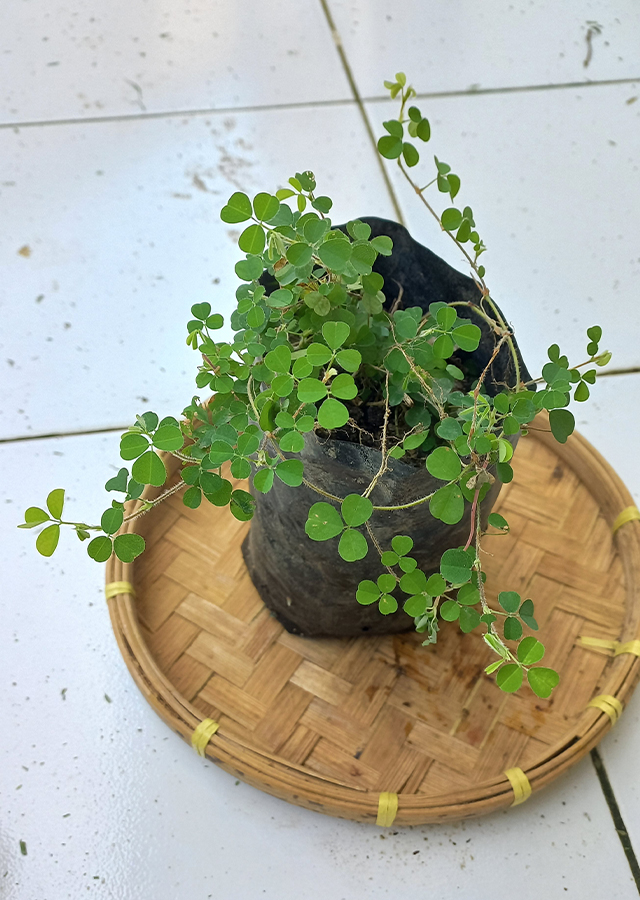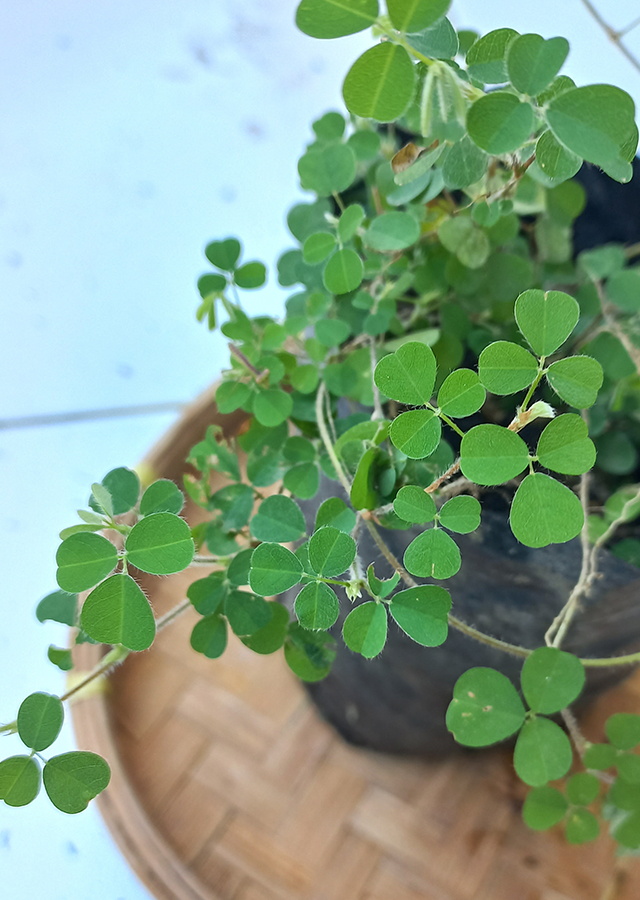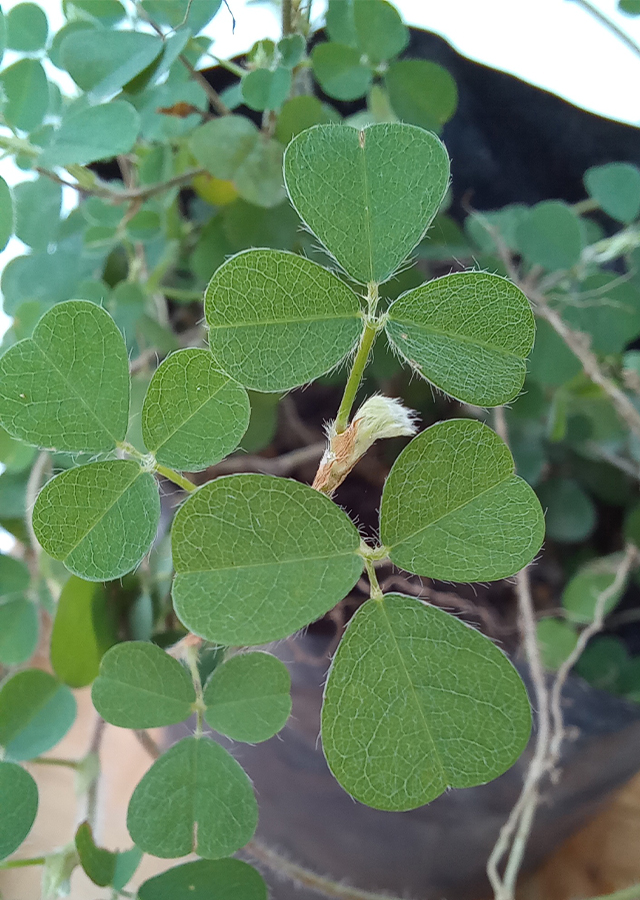Spanish Clover
Desmodium heterophyllum (Willd.) DC.
Fabaceae
Location in our garden
Beneficial Weed



Synonym
Desmodium triflorum var. majus Wight & Arn.
Hedysarum heterophyllum Willd.
Hedysarum reptans Roxb.
Habitus
Shrubs. A more-or less prostrate perennial plant, branching freely and rooting from strongly stoloniferous stems to form dense mats of growth
Part Used
Leaves
Roots
Twigs
The Whole Plant
Growing Requirements
Full Sunshine
Drought Resistant
Habitat
Riverbanks
Roadside
Grassland
Terrestrial
Overview
Its native distributions are Mascarene Islands to India, Southeast Asia, Philippines and Taiwan, now widely naturalized in the Pacific eastward to Hawaii. The plant can be grown as a ground cover and green manure.
Vernacular Names
Trom prei (Cambodian), Bian ye shan ma huang (Chinese), Tellausiri (India), Rumput sisek naga (Malay), Ya-maengmi (Thai), Trang qu'a di diep (Vietnamese).
Agroecology
A plant of the moist tropics, where it is found at elevations up to 900 m. It grows best in areas where annual daytime temperatures are within the range 23 - 28 °C, but can tolerate 12 - 35 °C. It prefers a mean annual rainfall in the range 2,000 - 4,000 mm, but tolerates 1,500 - 5,000 mm, and is able to persist through a dry season of up to 5 months. Succeeds on a wide range of soils from sands to clays. Plants are tolerant of water-logged soils and seasonal, short-term flooding. Prefers a pH in the range 5 - 6, tolerating 4.5 - 7.
Morphology
- Stems - young stems are covered in soft brown hairs (1.5-2.0 mm long), while mature stems are woody and hairless.
- Leaves - compound leaves are composed of 3 oval to obovate leaflets. Leaflets have smooth edges (entire margin) with a slight notch at the tip (emarginate). They are densely covered in soft, white hairs.
- Flowers - small flowers are pink and pea-like (3-5 mm long).
- Fruits - fruits are short pods (1.2-2.5 cm long) with wavy edges. Bean-shaped seeds are dark brown and smooth.
- Seeds - bean-shaped or transverse ellipses, dark brown, smooth.
Cultivation
- Propagated by seeds - best sown as soon as it is ripe. Stored seed develops a hard seedcoat and may benefit from scarification before sowing in order to speed up and improve germination.
- By cuttings of half-ripe wood with a heel.
- By Division - larger clumps can be replanted direct into their permanent positions, though it is best to pot up smaller clumps and grow them on until they are rooting well.
- By root cuttings.
Chemical Constituents
(3R)-2',4',5,7-tetrahydroxy-6-methylisolavanone, 4',5,7-trihydroxy-3'-methoxyisoflavone, 2',4',5,7-tetrahydroxyisoflavone, alkaloid, isoflavanone, dalbergioidin, genistein.
Traditional Medicinal Uses
- Roots and leaves, pounded together, are applied to sores.
- Juice dropped into the ear for earache.
- Decoction taken for stomach aches and other abdominal complaints.
- In Cambodia, twigs and leaves used to treat urinary retention and digestive complaints. Also used for diarrhea and dysentery. Leaves used as galatagogue.
- In Mauritius, used as a diuretic, for dysentery, and as a cooling medicine.
- In Lombok, Indonesia, roots, stems, and leaves used for scabies and itches.
- In West Java, Indonesia, used as postpartum remedy. Also for lack of appetite.
- In India, whole plant used as galactagogue and expectorant. Also used as tonic and diuretic. Plant decoction used for stomach aches.
- In Malaysia, used for sores, earaches, stomach aches and abdominal complaints.
Part Used
Reference Sources
- Fern, Ken. Useful Tropical Plants. (2021). Desmodium heterophyllum. http://tropical.theferns.info/viewtropical.php?id=Desmodium+heterophyllum. 07-01-22.
- Flora & Fauna Web. Desmodium heterophyllum. https://www.nparks.gov.sg/florafaunaweb/flora/1/9/1925. 07-01-22.
- StuartXchange. Philippines medicinal Plant. (2020). Desmodium heterophyllum. http://www.stuartxchange.org/Hetero. 07-01-22.


